
El ciclo contable en Guatemala.
- Subject:
- Accounting
- Education
- Material Type:
- Lecture Notes
- Author:
- César Rodas
- Date Added:
- 05/06/2020

El ciclo contable en Guatemala.
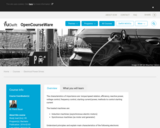
After this course the student can:
Understand mechanical system requirements for Electric Drive
Understand and apply passive network elements (R, L, C), laws of Kirchhof, Lorentz, Faraday
Understand and apply: phasors for simple R,L,C circuits
Understand and apply real and reactive power, rms, active and reactive current, cos phi
Describe direct current (DC), (single phase) alternating current (AC) and (three phase) alternating current systems, star-delta connection
Understand the principle of switch mode power electronic converters, pole as a two quadrant and four quadrant converter
Understand principles of magnetic circuits, inductances and transformers

In this lesson on branch circuits in electrical wiring, students will explore installing devices, calculating load and location, and safety in electrical wiring of branch circuits. Documents include a slide presentation and notes, NEC diagram, and four student practice worksheets.

European gas and electricity markets have largely been liberalized. Due to the specific physical characteristics and public interest aspects of electricity and gas, and to the fact that the networks continue to be natural monopolies, these markets require careful design. In this class, it is analyzed what the market design variables are and how the ongoing process of market design depends on policy goals, starting conditions and physical, technical and institutional constraints. In addition, a number of current policy issues will be discussed, such as security of supply, the CO2 emissions market, the integration of European energy markets and privatization. Participation in a simulation game, in which long-term market dynamics are simulated, is mandatory.

This Resourse explains the phenomenon of 'Electromagnetin Induction' in a simple manner which is useful for the high school level students.

An introduction to EMW for FYUGP students of RU
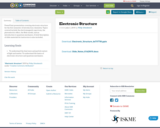
PowerPoint presentation covering electronic structure for the first semester of introductory chemistry. Topics covered include the electromagnetic spectrum, the photoelectric effect, the Bohr model, and an introduction to quantum mechanics. A brief description of slide materials for instructors is also included.
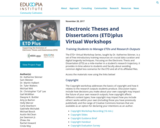
The ETD+ Virtual Workshop Series, taught by Dr. Katherine Skinner, is a set of free introductory training resources on crucial data curation and digital longevity techniques. Focusing on the Electronic Thesis and Dissertation (ETD) as a mile-marker in a student’s research trajectory, it provides in-time advice to students and faculty about avoiding common digital loss scenarios for the ETD and all of its affiliated files.
About the ETDplus Project
The ETDplus project is helping institutions ensure the longevity and availability of ETD research data and complex digital objects (e.g., software, multimedia files) that comprise an integral component of student theses and dissertations. The project was generously funded by the Institute of Museum and Library Services (IMLS) and led by the Educopia Institute, in collaboration with the NDLTD, HBCU Alliance, bepress, ProQuest, and the libraries of Carnegie Mellon, Colorado State, Indiana State, Morehouse, Oregon State, Penn State, Purdue, University of Louisville, University of Tennessee, the University of North Texas, and Virginia Tech.
Acknowledgements
This project was made possible in part by the Institute of Museum and Library Services.

The interactions of electrons with matter have great explanatory power and are central to many technologies from transistors, diodes, smoke detectors, and dosemeters to sophisticated imaging, lasers, and quantum computing. A conceptual grasp of the interactions of electrons in general allows students to acquire deeper understanding that can be applied to a very broad range of technologies.
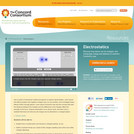
Use a series of interactive models and games to explore electrostatics. Learn about the effects positive and negative charges have on one another, and investigate these effects further through games. Learn about Coulomb's law and the concept that both the distance between the charges and the difference in the charges affect the strength of the force. Explore polarization at an atomic level, and learn how a material that does not hold any net charge can be attracted to a charged object. Students will be able to:

Complete set of mobile friendly Elementary Algebra sample exams with solutions. In addition, there are links to pdf versions and a sample final exam with answers.
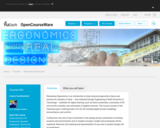
Elementary Ergonomics is an introduction to basic physical ergonomics theory and practice for students of other - than Industrial Design Engineering of Delft University of Technology - institutes for higher learning, such as Dutch universities, universities of EU and non-EU countries, and universities of applied sciences. The course consists of the following topics: anthropometry (1D, 2D, 3D including digital human modelling), biomechanics, and comfort.
Furthermore, the role of user involvement in the design process (evaluation of existing products and environments and of created concepts, models and prototypes) will be explained. Moreover, the meaning and representation of use cues in product design will be highlighted.

My personal notes for Solid State Physics (PH 461) at Southern Oregon University.Dr. Ellen Siem

Ellen Siem 2015 Notes for Thermal Physics (PH 354 at Southern Oregon University)
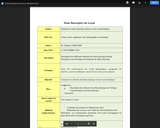
Description des différents éléments du milieu physique africain
Préciser les Principales caractéristiques des éléments du milieu physique.
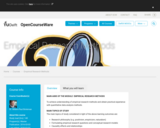
The main topics of study considered in light of the above learning outcomes are:Research philosophy (e.g. positivism, empiricism, naturalism)Formulating empirical research questions and conceptual research modelsCausality effects and relationshipsValidity and ReliabilityScales of measurement (e.g. nominal, ordinal, interval, ratio)Sampling methods (e.g. experiment, survey, observations) and measure instruments (e.g. Likert scales, semantic differential, event versus time sampling)Experimental design (e.g. within and between-subjects, factorial design, counter-balancing, Latin square)Biases in empirical research approaches (e.g. confounding variables, statistical power)Data preparation (e.g. standardization of data, reliability analysis, Inter-rater reliability)Hypothesis testing, t-test, (M)ANOVA, correlation, regression analysisNon-parametric approaches to data analysis

Communication Skills has been considered the most important aspect of one's personality. It is the only factor that gets you colours of success and failures. It must be recognised as the leading feature that an employer wants in an employee. During the process of applying for a Job and joining a Job, there are multiple complexes.
This Course deals with the same. Employability Enhancement.
Resume Writing, Online Job Profiles, Group Discussions as Selection Process tools, Interviews etc.
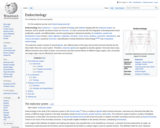
This module gives a brief introduction to endocrinology. This is a part of an assignment for SWAYAM online course OER for empowering teachers.

This module gives a brief introduction to endocrinology. This is a part of an assignment for SWAYAM online course OER for empowering teachers.
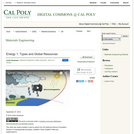
This video defines energy, reviews a model of different types of energy and presents the four known stable global energy resources. This video is part of the Sustainability Learning Suites, made possible in part by a grant from the National Science Foundation. See 'Learn more about this resource' for Learning Objectives and Activities.